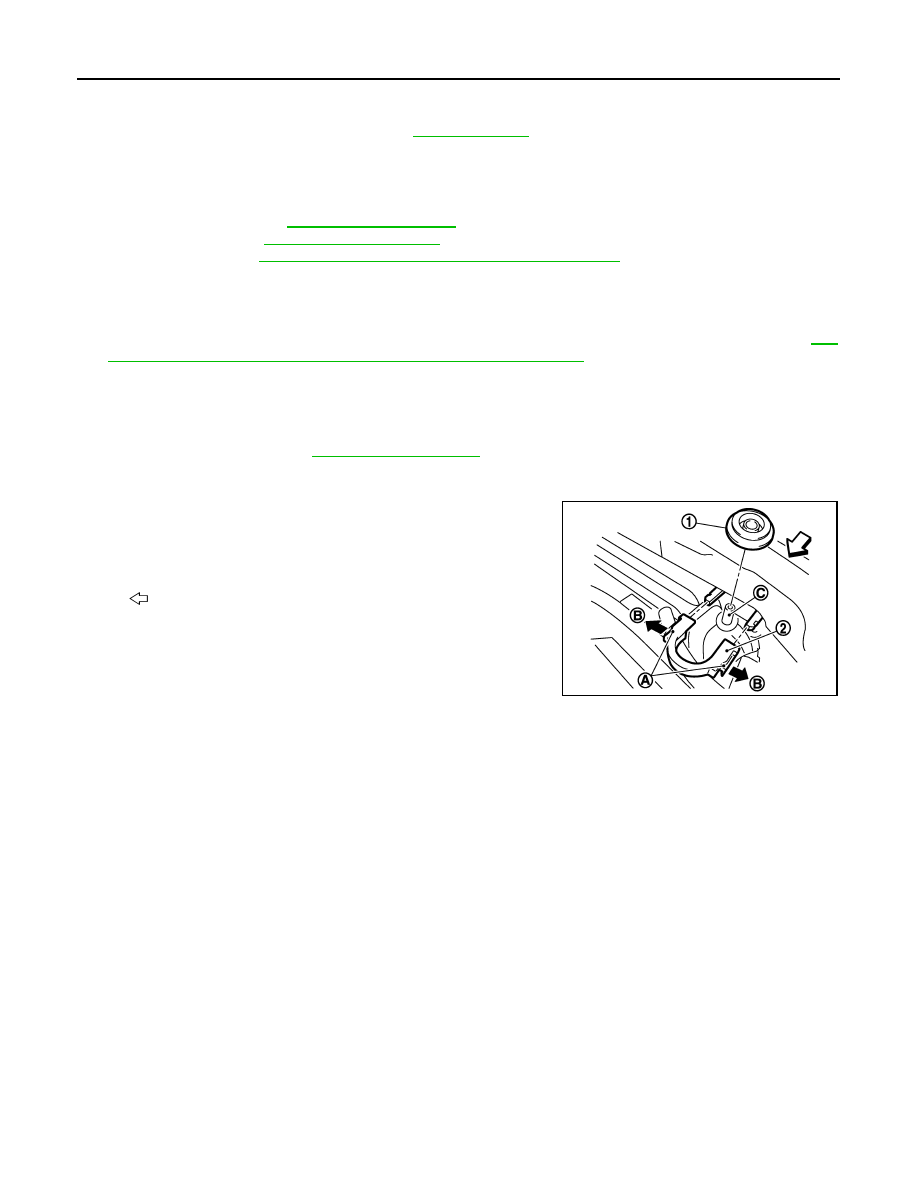Nissan Quest E52. Manual - part 286

CO-14
< REMOVAL AND INSTALLATION >
RADIATOR
When removing components such as hoses, tubes/lines, etc., cap or plug openings to prevent fluid from spill-
ing.
1.
Drain engine coolant from radiator. Refer to
.
CAUTION:
• Perform this step when the engine is cold.
• Never spill engine coolant on drive belt.
2.
Remove the following parts:
• Air duct (inlet): Refer to
.
• Front grille: Refer to
DLK-459, "HOOD LOCK : Removal and Installation"
.
3.
Disconnect reservoir tank hose from radiator pipe (upper).
4.
Disconnect CVT fluid cooler hoses from radiator.
• Install blind plug to avoid leakage of CVT fluid.
5.
Separate low pressure flexible hose from low pressure pipe and move the separated hose. Refer to
36, "LOW-PRESSURE FLEXIBLE HOSE : Removal and Installation"
6.
Remove radiator cap adapter and each radiator hoses (upper and lower) and radiator pipe (upper)
assembly.
CAUTION:
Be careful not to allow engine coolant to contact drive belt.
7.
Remove condenser. Refer to
.
CAUTION:
Be careful not to damage condenser core.
8.
Remove each radiator upper clips (2) by pulling the tabs (A) out-
side to release the lock (B) and then remove each mounting rub-
bers (upper) (1).
CAUTION:
Never pull the tabs outside excessively to prevent it from
damping.
9.
Lift up and remove radiator from front of radiator core support.
CAUTION:
Be careful not to damage or scratch on radiator core.
INSTALLATION
Note the following, and install in the reverse order of removal.
CAUTION:
Do not reuse O-ring.
NOTE:
When installing radiator core support (upper), check that the upper and lower mounts of radiator and air con-
denser are securely inserted in each mounting hole of radiator core support (upper and lower).
CAUTION:
Always use genuine bolts for cooling fan assembly mounting bolts and observe the tightening torque.
(To prevent damage to radiator)
Radiator Upper Clip
Install each radiator upper clips on radiator core connection as follows:
C
: Mounting pin
: Vehicle front
JPBIA1689ZZ